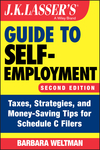How to Benefit from the Recovery Package Now
The American Recovery and Reinvestment Act of 2009, which was signed into law on February 17, creates a number of ways that you can save money now. Here’s how:
Get Your Making Work Pay Credit
For 2009 and 2010, there’s a credit of 6.5% of earned income, up to a maximum of $400 for singles, and $800 for joint filers. The credit phases out for singles with adjusted gross income (AGI) over $75,000, and joint filers with AGI over $150,000, most earners will start getting higher take-home pay soon. The IRS has revised withholding tables so employers can start to give workers their credit by means of increased take-home pay (employers are asked to start using the tables no later than April 1, 2009).
Presumably, those who receive the credit but are ineligible for it because of their AGI or who receive multiple credits because they work for two or more employers will make adjustments when they file their 2009 returns.
Claiming a First-Time Home Buyer Credit
If you bought a home in 2009, you can opt to treat the purchase as having taken place on December 31, 2008. This lets you take the first-time home buyer credit (Form 5405) on your 2008 return, assuming you’re eligible for the credit (you meet income limits and haven’t owned a home for at least three years).
While the credit is 10% up to $7,500 for homes purchased during the eligibility period in 2008, it’s up to $8,000 for homes purchased in the first 11 months of 2009. The $8,000 limit apples if you opt to take the credit for a 2009 purchase on your 2008 return.
While the credit for homes purchased in 2008 is subject to a 15-year repayment, those purchased in 2009 have no repayment as long as the home isn’t sold within 36 months. There won’t be any repayment (provided they don’t sell within 36 months) for those who claim the credit for a 2009 purchase on their 2008 return.
Net Operating Losses
If your sole proprietorship was unprofitable in 2008, you may have a net operating loss (NOL). Usually, such loss can be carried back to offset income in 2 years, giving you an immediate tax refund. You can, however, opt to use a 3-, 4-, or 5-year carryback, provided your average gross receipts are under $15 million. If you had a big NOL in 2008, using a longer carryback period can enable you to use up the loss carryback and obtain the greatest refund possible.
Estimated Taxes for Self-Employed
If your AGI in 2008 was under $500,000 and you derive more than half of your income from a business with 500 employees or less, you can reduce your estimated tax payments for 2009 without incurring a penalty. You’ll escape any penalty in this case if you pay at least 90% of the tax shown on your 2008 return.
S corporation
A corporation that elects S status in order to receive tax treatment similar to that of a partnership.



